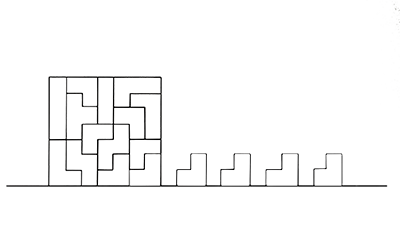Business Model Generation: Value proposition
Make More of It
Offer part of your value chain as a product or service to other companies

How: Leverage core competencies and assets used to build your own products to offer new products to other companies.
Why: Generate new revenue streams based on knowledge and assets already available and reduce operational slack.
Leveraging internal assets for external profit
In the Make More of It business model, a company utilizes its specialized knowledge and resources to generate additional revenue by offering them as a service to external parties. By monetizing excess capacity and expertise, a company can not only supplement its core value proposition, but also invest in improving internal processes and revitalizing its core business. This approach not only allows a company to optimize its utilization of resources, but also enhances its reputation as an innovation leader, ultimately benefiting its long-term sales.
Where did the Make More of It business model pattern originate from?
Founded in 1931 by an Austrian engineer, Porsche is a German manufacturer of luxury vehicles, renowned for its high-quality research and development and effective customer development strategies. Through its subsidiary, Porsche Engineering Group, the company capitalizes on these core competencies by contracting out its expertise to third parties. Porsche Engineering Group supports its customers throughout the process of car and component production, enabling them to benefit from Porsche’s extensive engineering experience and R&D facilities. This not only helps to foster the company’s reputation as an innovative leader in the field, but also attracts business customers and generates additional revenue. Prior to being acquired by Volkswagen, Porsche often sold its engineering capabilities to third parties during periods of low utilization of its R&D capacity. Today, Porsche Engineering derives 70% of its revenue from external clients.
Other companies have adopted similar models, such as Swiss firm Sulzer, which markets its engineering knowledge and expertise through Sulzer Innotec, and turbine developer MTU, which offers specialized know-how to outside customers through MTU Engineering. By externalizing their R&D capabilities, these companies are able to better finance their research and development activities while also providing value to external clients.
Applying the Make More of It business model
The Make More of It pattern approaches core competencies as a means of accessing new market opportunities, rather than simply as a form of outsourcing. By identifying technologies, processes, and skills that contribute to a company’s unique and hard-to-imitate competencies, it is possible to identify markets where these competencies can be leveraged in innovative ways. For example, high-precision machinery companies in the automotive sector have utilized the Make More of It model by entering the medical device market. To effectively utilize the Make More of It approach, it is essential to thoroughly assess and understand one’s core competencies and their potential applications.
Real life Make More of It examples
Amazon Web Services
When e-commerce sales scaled, so did its cloud server infrastructure, becoming so successful it was sold to third parties.
IDEO U
The design and consulting firm offers comprehensive training in the Design Thinking method they helped establish.
BASF
The German manufacturer of chemicals, plastics, and other synthetic materials, utilizes its network of production plants (known as Verbund sites) to efficiently utilize raw materials and integrate by-products from one stage into another. By working with subsidiaries and external partners at its Verbund sites, BASF is able to generate additional revenue from its by-products.
Sennheiser Electronic
The German producer of high-end audio products, complements its production with the Sennheiser Sound Academy, which provides training and expert knowledge to employees, retailers, and customers across a wide range of audio technologies and processes. This helps to establish Sennheiser as an authority in the audio technology field and allows the company to effectively utilize its technical know-how.
Trigger Questions
- Can you identify your core competencies, and are they truly unique?
- Can you sell your core competencies as a service outside your original industry?
- Are our core competencies truly differentiated and difficult for others to replicate?
- Have we sought the input of innovation experts in our targeted market to assess the potential of our core competencies?
- Have we validated our assumptions about the target market, its characteristics, and its attractiveness through research and external expertise?
Proven business models that have driven success for global leaders across industries. Rethink how your business can create, deliver, and capture value.
Get your deck!Related plays
- Business Model Navigator by Karolin Frankenberger and Oliver Gassmann

